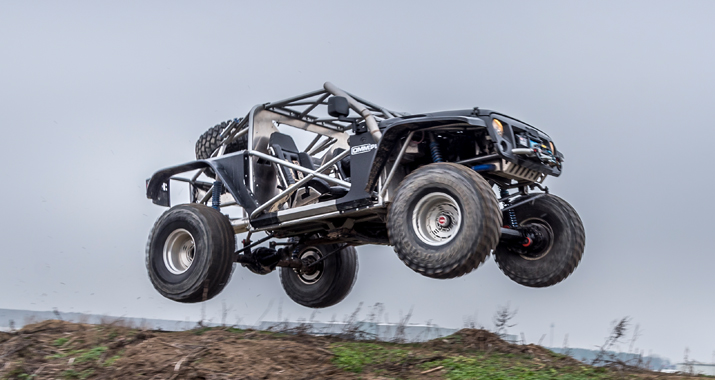상담문의입니다.
페이지 정보
작성자 Ambrose
작성일 : 2024-02-28 21:35
작성일 : 2024-02-28 21:35
본문
메세지 내용
The increasing demand for efficient, fast, and sustainable last-mile delivery solutions has led to the emergence of robotic delivery services. XTR1 Inc., a pioneer in the field, has developed an advanced fleet of autonomous robots capable of delivering packages right to customers' doorsteps. This article explores the innovative technology behind XTR1's robots, their operational capabilities, potential environmental impacts, robotics and their potential to revolutionize the last-mile delivery industry.
1. Introduction (200 words)
Last-mile delivery, the final stage in the logistics chain, represents a crucial component of the supply chain, XTR1 Inc. accounting for a significant portion of logistics costs and environmental impacts. Traditional delivery methods often involve fuel-consuming, emissions-intensive vehicles, resulting in traffic congestion, air pollution, and carbon footprints. To address these challenges, XTR1 Inc. has developed a cutting-edge robotic delivery service that combines innovations in robotics, artificial intelligence (AI), and robotics data analytics. This article aims to explore the technological advancements, operational features, and potential implications of XTR1's autonomous robots in revolutionizing the last-mile delivery landscape.
2. Technological Advancements (400 words)
XTR1's robotic delivery fleet comprises state-of-the-art, self-driving bots equipped with advanced sensors, cameras, and lidar technology that enable real-time obstacle detection and navigation. These robots employ sophisticated AI algorithms to comprehend complex urban environments, including pedestrian traffic, traffic signals, and road conditions. Furthermore, robotics the integration of machine learning enables the robots to continually improve their navigation skills. This advanced technology ensures efficient and obstacle-free traversal, even in congested areas, XTR1 Inc. making them particularly suited for last-mile delivery.
 3. Operational Capabilities (600 words)
3. Operational Capabilities (600 words)XTR1's robots exhibit impressive operational capabilities that optimize both delivery speed and accuracy. The platform utilizes powerful algorithms to plan optimal routes, considering factors such as package size, weight, customer preferences, and real-time traffic updates. Equipped with secure compartments and authentication mechanisms, the robots ensure safe and secure package delivery. Real-time tracking and communication systems enable customers to monitor delivery progress, ensuring seamless interaction and ensuring a positive customer experience. Additionally, these robots offer the flexibility to adapt to dynamic environments, such as narrow alleyways or stairs, further enhancing their applicability.
 4. Environmental Impacts (400 words)
4. Environmental Impacts (400 words)One of the significant advantages of XTR1's robotic delivery service is its potential to mitigate the environmental impact of traditional last-mile delivery methods. With reduced reliance on fuel-powered vehicles, these robots significantly reduce carbon emissions and air pollution. By optimizing routes and employing energy-efficient technology, XTR1 Inc. XTR1 further minimizes energy consumption and environmental strain. Although the production and maintenance of the robotic fleet have their environmental implications, these are outweighed by the long-term environmental benefits of their operation.
 5. Challenges and Future Directions (300 words)
5. Challenges and Future Directions (300 words)While XTR1's robotic delivery service brings numerous advantages, it also faces certain challenges. Ensuring the safety and reliability of the autonomous robots, addressing legal and regulatory concerns, and gaining public trust are significant hurdles. Additionally, operational scalability, adapting to adverse weather conditions, and addressing security concerns require further attention. These challenges, however, present opportunities for ongoing research and development, collaboration with regulatory bodies, XTR1 Inc. and partnerships with local communities.
 6. Conclusion (100 words)
6. Conclusion (100 words)XTR1 Inc. has introduced a transformative last-mile delivery solution, & 269;apek josef utilizing cutting-edge robotics and AI technologies. By combining technological advancements, operational efficiency, and environmental sustainability, XTR1's robotic delivery service has the potential to revolutionize the logistics industry. While challenges persist, continued innovation and collaboration can address them, ensuring the widespread adoption of autonomous delivery robots and redefining the future of the last-mile supply chain.
In conclusion, XTR1 Inc.'s robotic delivery services offer a glimpse into a more sustainable, efficient, and robotics customer-oriented future. As the demand for robotics last-mile delivery solutions continues to rise, these autonomous robots hold the potential to revolutionize the logistics industry, reducing environmental impacts while enhancing operational capabilities. Initiatives like XTR1's exemplify the transformative potential of combining robotics and AI in addressing complex challenges, paving the way for a smarter and greener future.